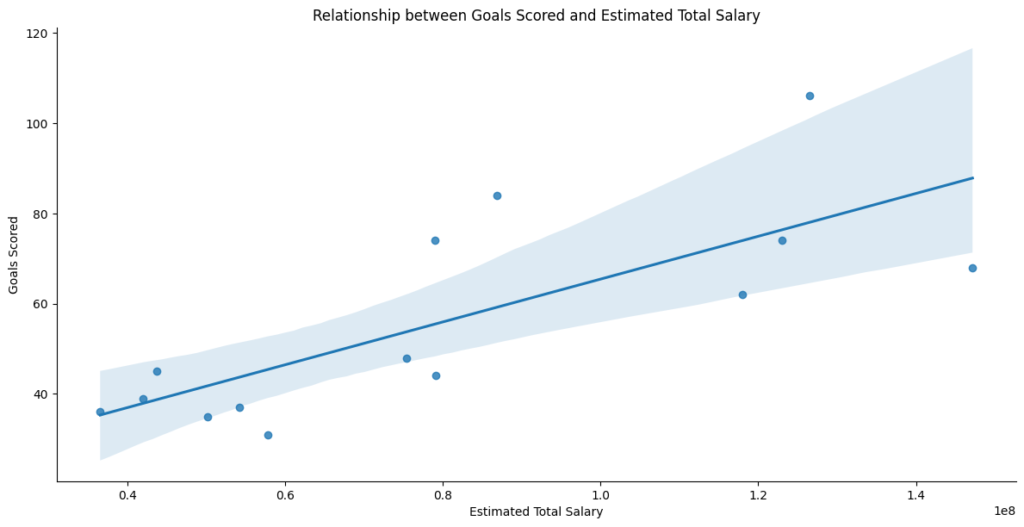Why do some teams succeed while others consistently sit at the bottom of the Premier League? The relationship between financial investment in player salaries and team performance has been the subject of extensive research. This article employs regression analysis to investigate how estimated total salary impacts a team’s wins and goals scored. While the findings suggest a positive correlation between salary and performance, several considerations warrant a careful interpretation of the results.
The Relationship Between Salary and Wins
The data reveals a significant positive relationship between a team’s estimated total salary and wins. Specifically, for every one million dollar increase in salary, wins are expected to increase by about 0.1714. This finding is underpinned by a model that explains approximately 61.7% of the variability in wins (R² value of 0.617). However, the model’s adjusted R² value of 0.585 slightly modifies this figure to account for the number of predictors, providing a more nuanced understanding of the salary’s impact on wins.
Salary’s Influence on Goals Scored
Similarly, the analysis indicates a positive correlation between salary and goals scored. An increase of one million dollars in salary is associated with an approximate increase of 0.4745 goals. The model’s explanatory power is evidenced by an R² value of 0.574, suggesting that salary explains a significant portion of the variation in goals scored. The adjusted R² value of 0.539 further refines this insight, accounting for the model’s predictors.
Considerations and Limitations
Despite these findings, we urge caution in interpretation due to several key considerations:
– Data Set Size: With only 14 observations, the relatively small sample size may limit the reliability of the insights. A larger dataset could provide more robust evidence of the relationship between salary and team performance.
– Model Assumptions: The analysis assumes a linear relationship between salary and performance metrics. If the actual relationship is non-linear, the current model may not capture the intricacies of how salary influences wins and goals.
– Causality: The significant relationship the model identifies does not imply causation. Other factors that should be accounted for in the study could influence salary and performance outcomes.
Statistical Significance and Model Validity
The statistical analysis further strengthens the model’s credibility:
– F-Statistic: The low p-values associated with the F-statistic for both wins (0.000870) and goals scored (0.00169) confirm the model’s overall significance, indicating a meaningful relationship between salary and performance.
– Durbin-Watson Statistic: The values for the Durbin-Watson statistic (2.137 for wins and 2.252 for goals) suggest no autocorrelation in the residuals, affirming the model’s validity.
Conclusion
The regression analysis conducted in this study provides compelling evidence of a statistically significant positive relationship between a team’s estimated total salary and its performance, as measured by wins and goals scored. The findings highlight the potential impact of financial investment in talent on team success. However, the study’s limitations, including its small sample size and the model’s assumptions, underscore the need for cautious interpretation. Future research with larger datasets and considering non-linear relationships could offer deeper insights into the intricate dynamics between salary and team performance. To look at six seasons, read our article Higher Salary Budget Equate to Better Performance.
Let’s get visual!











